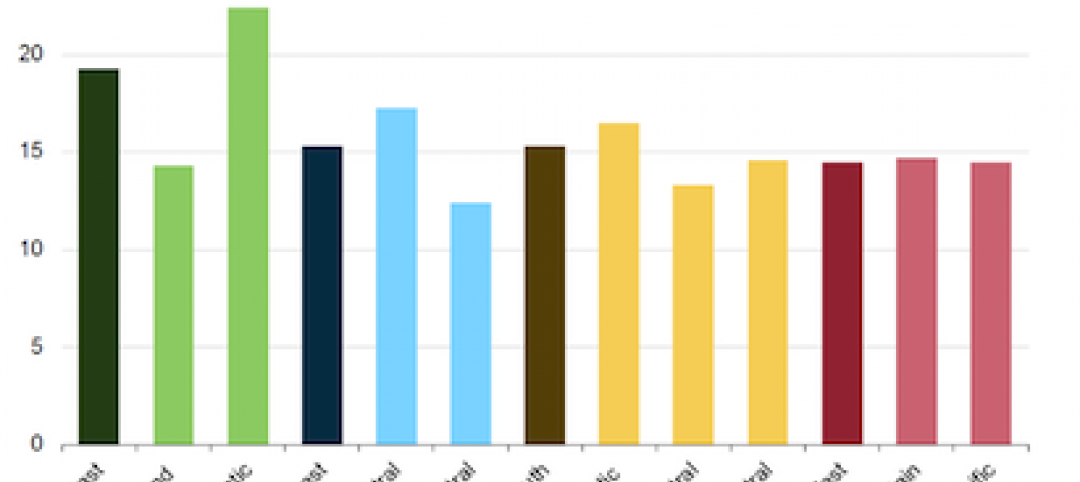Marking the beginning of a new era of transparency around energy use in buildings, New York City has publicly posted 2011 energy benchmarking results for 2,065 large commercial properties, which together cover more than 530 million square feet.
This is the first time that any U.S. city, state, or county has disclosed private-sector building energy data from a mandatory benchmarking policy.
The 2011 results are posted on the Greener, Greater Buildings Plan website, along with a letter giving a more detailed explanation of the output scores. The posting of benchmarking results will now be an annual occurrence for all large buildings in New York City. Results for large residential buildings will be posted for the first time in the fall of 2013, along with those for commercial and municipal buildings.
Energy use in buildings is responsible for roughly 75% of New York City’s emissions. The benchmarking, or measuring, and disclosure of energy use in buildings is the cornerstone of the city’s Greener, Greater Buildings Plan -- the most comprehensive policy in the nation addressing energy use in existing buildings -- and it is key to achieving the ambitious PlaNYC goal of reducing citywide carbon emissions 30 percent by 2030.
The benchmarking data can be used to assess where cost-effective building improvements can be made and to allow the market to find those opportunities. And since New York City’s benchmarking requirement is annual, the city and the market will be able to reward buildings that improve their performance year on year.
The benchmarking data also enabled the city to analyze for the first time how building energy use varies with building age, location, size, fuel mix, and an assortment of other factors.
Benchmarking data from 2010, released last month, showed that energy-use intensity varies dramatically among the same types of buildings, with the worst-performing buildings using three to five times the amount of energy per square foot as the best. Consequently, there is potential to save tremendous amounts of energy by improving the efficiency of the poor performers.
Under New York’s benchmarking ordinance, building owners annually enter energy and water use data and other pertinent information about their buildings, such as square footage and hours of operation, into the U.S. Environmental Protection Agency’s (EPA) free online benchmarking tool, ENERGY STAR Portfolio Manager.
From this information, Portfolio Manager calculates the benchmarking results, including the energy and water use per square foot, the carbon emissions, and for some types of buildings, a 1-to-100 ENERGY STAR rating comparing the building’s relative energy performance with other similar buildings, normalized for building occupancy factors. The city’s posting includes these outputs.
However, even if all the input data were correct, the benchmarking results still require interpretation. There are many reasons why a building might have a high energy intensity. Sometimes that could be due to inefficient operations or outmoded equipment, but it also could be due to a high occupant density or longer hours of operation. High energy intensity does not always mean energy waste. +
Related Stories
| Aug 4, 2014
Facebook’s prefab data center concept aims to slash construction time in half
Less than a year after opening its ultra-green, hydropowered data center facility in Luleå, Sweden, Facebook is back at it in Mother Svea with yet another novel approach to data center design.
| Jul 30, 2014
German students design rooftop solar panels that double as housing
Students at the Frankfurt University of Applied Sciences designed a solar panel that can double as living space for the Solar Decathlon Europe.
| Jul 17, 2014
A harmful trade-off many U.S. green buildings make
The Urban Green Council addresses a concern that many "green" buildings in the U.S. have: poor insulation.
| Jul 17, 2014
A high-rise with outdoor, vertical community space? It's possible! [slideshow]
Danish design firm C.F. Møller has developed a novel way to increase community space without compromising privacy or indoor space.
| Jul 11, 2014
Are these LEGO-like blocks the future of construction?
Kite Bricks proposes a more efficient way of building with its newly developed Smart Bricks system.
| Jun 20, 2014
U.S. Energy Information Administration releases preliminary Commercial Buildings Energy Consumption Survey results
Federal survey project shows that commercial-building floorspace has grown 22% since 2003; energy-use data will be released in Spring 2015.
| May 22, 2014
Facebook, Telus push the limits of energy efficiency with new data centers
Building Teams are employing a range of creative solutions—from evaporative cooling to novel hot/cold-aisle configurations to heat recovery schemes—in an effort to slash energy and water demand.
| May 22, 2014
Big Data meets data centers – What the coming DCIM boom means to owners and Building Teams
The demand for sophisticated facility monitoring solutions has spurred a new market segment—data center infrastructure management (DCIM)—that is likely to impact the way data center projects are planned, designed, built, and operated.
| May 20, 2014
Kinetic Architecture: New book explores innovations in active façades
The book, co-authored by Arup's Russell Fortmeyer, illustrates the various ways architects, consultants, and engineers approach energy and comfort by manipulating air, water, and light through the layers of passive and active building envelope systems.
| May 16, 2014
BoA, USGBC to offer $25,000 grants for green affordable housing projects
The Affordable Green Neighborhoods Grant Program will offer 14 grants to developers of affordable housing in North America who are committed to building sustainable communities through the LEED for Neighborhood Development program.
















